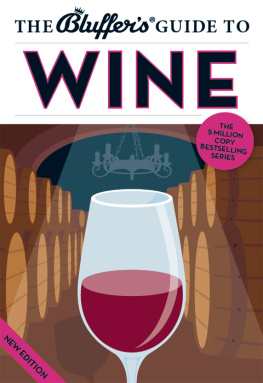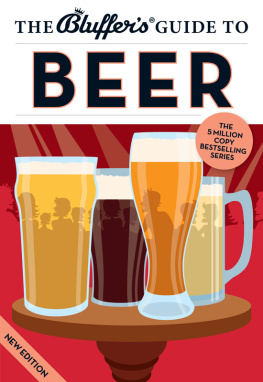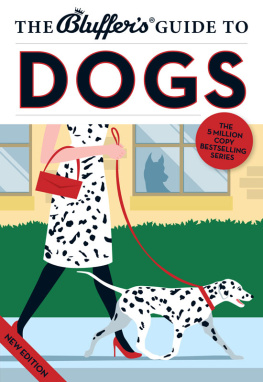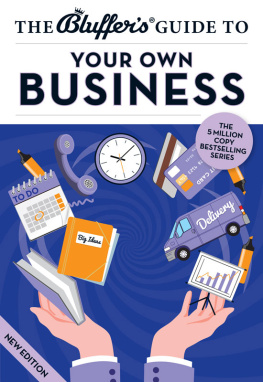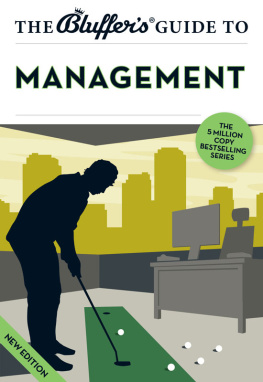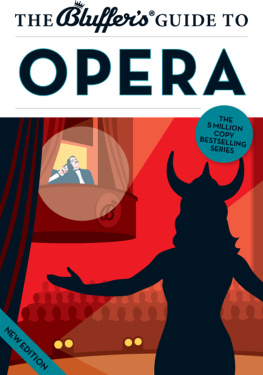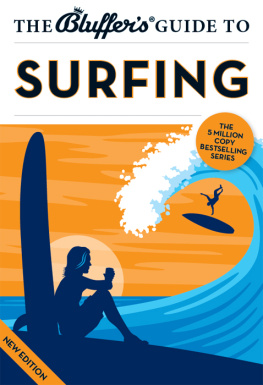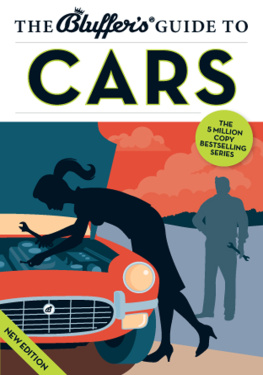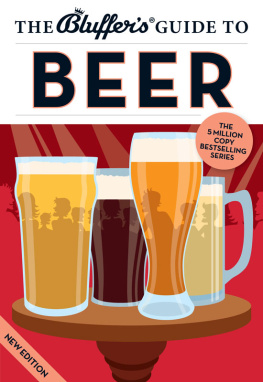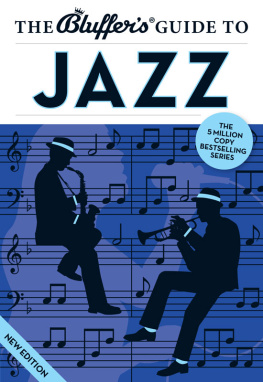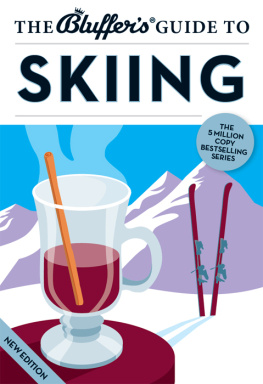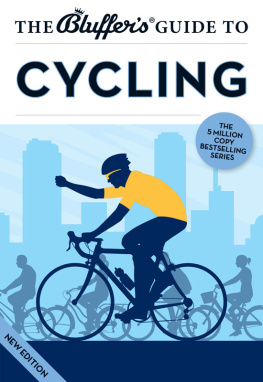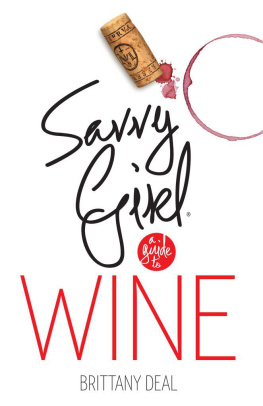

Colette House
52-55 Piccadilly
London W1J 0DX
United Kingdom
Email:
Website: bluffers.com
Twitter:
First published 1987
This edition published 2012
Copyright Bluffers 2012
Publisher: Thomas Drewry
Publishing Director: Brooke McDonald
Series Editor: David Allsop
Design and Illustration by Jim Shannon
All rights reserved. No part of this publication may be reproduced, stored in a retrieval system or transmitted in any form or by any means, electronic, mechanical, photocopying, recording or otherwise, without the prior permission of Bluffers.
A CIP Catalogue record for this book is available from the British Library.
Bluffers Guide, Bluffers and Bluff Your Way are registered trademarks.
| ISBN: | 978-1-909365-20-9 (print) |
| 978-1-909365-21-6 (ePub) |
| 978-1-909365-22-3 (Kindle) |

This guide will give you the tools to persuade marvelling listeners that you are a connoisseur of rare ability and experience without anybody discovering that, until you read it, all you really knew about wine was that its red, white or somewhere in between.

W ine has a mystique like no other drink and few other subjects. Many people are often defeated by it, thinking that in order to claim any knowledge of it they need to have visited various vineyards in France, to have a cellar (i.e., not a cupboard under the stairs), or to be able to identify exactly where a wine comes from without looking at the label.
This, needless to say, is nonsense. Long gone are the days when the wine drinker would ignore anything that didnt come from France or Germany. New World wine countries Australia, New Zealand, the USA, Chile, Argentina and South Africa have put themselves firmly on the map. Sleeping giants like Italy, Spain and Portugal are realising their potential with new and exciting styles. Even Greek wine, once a lost cause, has improved. The grapevine, in fact, is being cultivated in the most implausible places, from the hills of Maharashtra to the paddy-fields of Thailand and even the sheep-filled wilderness of Patagonia. And with global warming gathering pace, Falkland Islands Cabernet Franc and Greenland Gewrztraminer may not be far off. The message to the bluffer, then, is not to be intimidated by the mystique.
Some familiarity with the old traditions and etiquette is desirable, however, so that you can take on the bon viveur at his or her own game. This guide sets out to conduct you through the main danger zones in which you are most likely to encounter wine and the wine expert, and to equip you with a vocabulary and an evasive technique that will minimise the risk of being rumbled as a bluffer.
But it will do more. It will give you the tools to persuade legions of marvelling listeners that you are a connoisseur of rare ability and experience without anybody discovering that, until you read it, all you really knew about wine was that its red, white or somewhere in between.
P ut in the most simple terms, wine is fermented grape juice. People may make, talk about and even drink elderflower wine, peach wine, kiwi-fruit wine or whatever, but as a wine bluffer you do not need to know about them. And on no account discuss them. These fermented fruit concoctions have no mystique, and thus no bluffing potential.
Non-alcoholic wines are not wines. Wines, like some human beings, have an absolute need to be alcoholic. And they are made from grapes and only grapes.
COLOUR
Wine comes in three basic colours: red, white and ros. To look like a pro, tilt the glass slightly away from you so that you can look through the edge of the wine where it touches the glass. This can give the most telling indication of hue, and therefore age. To look like a poseur, tilt the glass in front of a white background, such as a piece of paper. The best way to assess a wines brightness (intensity of colour) is to look down through the glass.
Red Ranges from purple to light brown. A bright, intense colour is an indication of youthfulness and, occasionally, higher acidity. Young wines tend to be bright all the way to the edge, but the colour fades at the edge, gradually turning brown, as the wine ages. Old reds often have a pale, brick-red colour. Colour is also determined by the grape variety and, more specifically, by the thickness of the grape skins, where the pigments are found. For example, thick-skinned Cabernet Sauvignon or Syrah grapes produce darker, perhaps purple, wines; thin-skinned Pinot Noir might be a lighter cherry-red.
White Ranges from practically colourless through to pale green, straw-coloured, pale copper and deep gold to amber. Generally, very pale colours indicate a light, dry, unoaked wine, while deepening hues imply richer styles, possibly oaked and maybe sweeter. Colours usually deepen as the wine ages.
Ros Ranges from the insipid pale-pink of so-called blush wines from the USA, which taste as candy-like and confected as they look, to the bolder, deeper shades of metrosexual ross from places like Navarra in Spain and Tavel in Frances southern Rhne region.
SWEET AND DRY
First, its as well to remember that anything calling itself medium is, in fact, sweet. Second, all wines (except those made from grapes affected by noble rot; see ) are naturally dry. The sweetness comes either from stopping the fermentation before all the sugar has been converted to alcohol, or from adding unfermented grape juice, or from adding sugar, usually in liquid form.
All this doesnt mean you should scorn sweet wines. The ignorant have turned up their noses at them for so long that a very rewarding bluffing line can be cultivated in, say, the little-known sweet white wines of the Loire, or the really fine German Auslesen, Beerenauslesen and Trockenbeerenauslesen. It is a relief to know that the last two can be shortened to BA and TBA, respectively. If you want to create a real frisson, then recommend an Austrian TBA from a place called Rust.
FORTIFICATION
Most wines are unfortified that is to say, they have only the alcohol provided by God in the form of sun and grapes. But some wines, like Port, Sherry, Madeira and the two venerable old white wines, Marsala and Malaga, are strengthened by the addition of anything from brandy to industrial alcohol. Fortified wines, like fortified towns, should not be taken lightly. They get you buzzing more quickly but can land you with the most appalling aftereffects if youre not careful.
STILL OR SPARKLING
This should be self-explanatory. Wines come in either thick, heavy bottles with corks wrapped round with wire which are impossible to get out, in which case they are sparkling (i.e., fizzy, but for some reason this word must not be used of wines), or in ordinary bottles with ordinary corks which are impossible to get out, in which case they are still. The fun begins when you discover that many still wines are slightly fizzy, or rather, sparkling. Sometimes this is intentional, as with Portuguese Vinho Verde (literally green wine). Even when it is not intentional, its not necessarily considered a fault. The thing to do, in any case, is to say Hmm slightly ptillant (if its French) or Possibly
Next page
